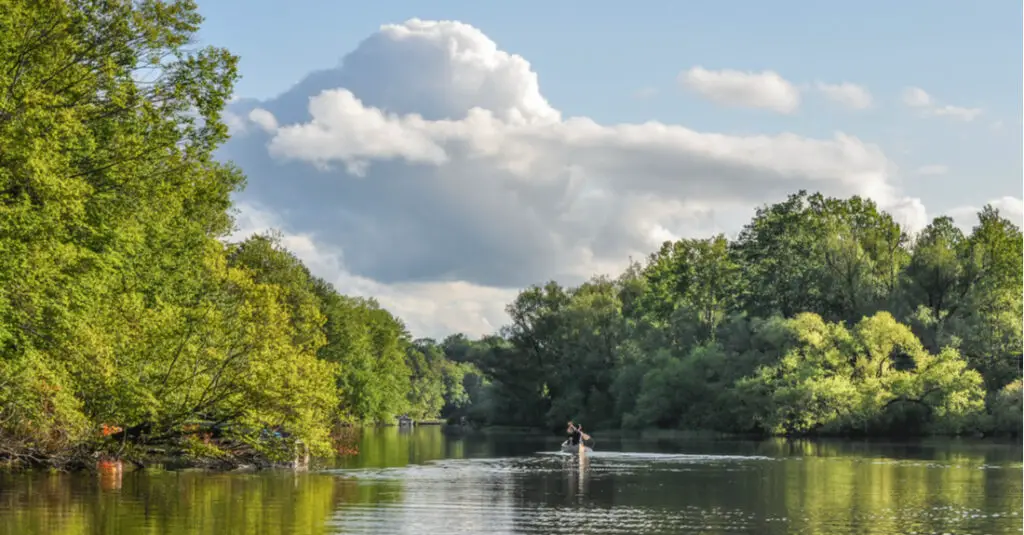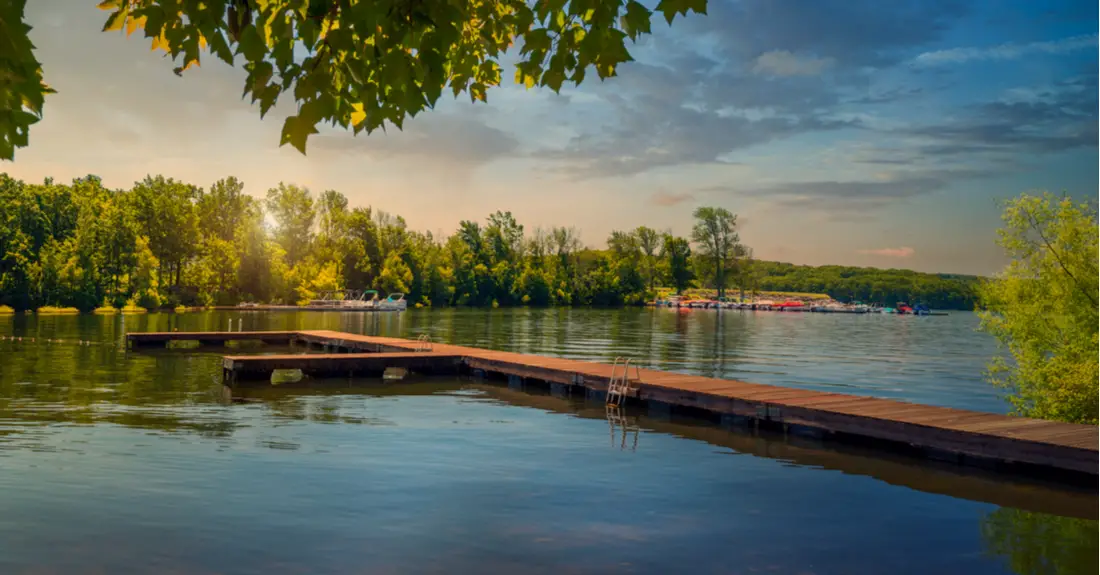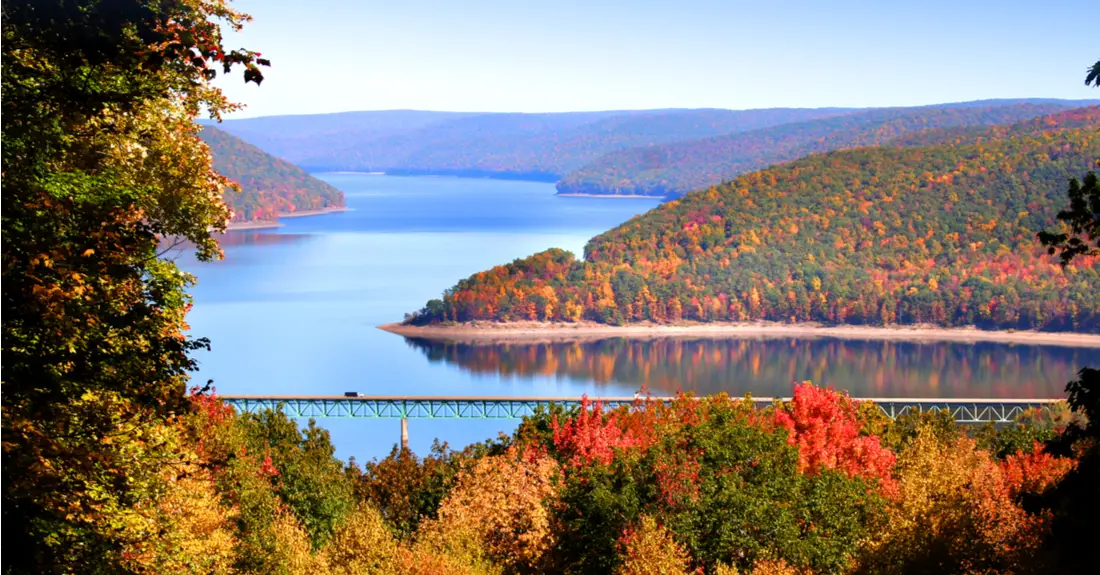The Best Places to Canoe in Pennsylvania


When it comes to canoeing and other water recreation, Pennsylvania may not be top of mind. But the state’s long, winding rivers and forest-shrouded lakes provide plenty of opportunities to paddle. Pennsylvania boasts an extensive network of water trails that meander through designated wilderness areas and historic regions. Meanwhile, Pennsylvania’s scenic lakes feature hiking trails, campgrounds and historic sites along their shores. To help you decide where to dip your paddle next, we’ve created a list of the best places to canoe in Pennsylvania.
See our list of the 10 best places to canoe in Pennsylvania:
Schuylkill River Water Trail
George Washington prayed beside this river in southeastern Pennsylvania during the Revolutionary War, and the Audubon painted birds on its banks. Today, the Schuylkill River caters to canoers. Flowing from Pennsylvania’s coal region to Philadelphia, the Schuylkill River Water Trail offers nearly 140 miles of scenic paddling. The trail is broken into 18 sections, each with easily reached access stations.

Three Rivers Water Trail
The Three Rivers Water Trail provides a unique way to experience Pittsburgh. The trail features more than 20 access points along the Allegheny, Monongahela, Ohio, and Youghiogheny rivers. From the water, you can admire the city’s famous bridges. Additionally, you can see historic sites like Carrie Furnace, part of what was once the powerful Homestead Works steel mill. Go canoeing in the summer evenings to experience the city’s fireworks displays from the water.
Youghiogheny River Water Trail
Extending off the Three Rivers Water Trail, the 75-mile Youghiogheny River Water Trail travels southeast towards the Pennsylvania-Maryland border. As you paddle down the Yough, keep your eyes open for the region’s unique geological features and historic sites. Depending on when you visit, you may spot a reenactment of British General Edward Braddock’s crossing of the river during the French and Indian War.
The Delaware River Water Trail
Tracing the eastern border of Pennsylvania, the Delaware River Water Trail offers 250 beautiful miles of waterways for canoeing. (And if that’s not enough, the trail connects to the 56-mile Tidal Delaware River Water Trail.) While paddling , you’ll pass a variety of ecosystems, including forests and wetlands, offering prime bird- and wildlife watching opportunities.

Lake Wallenpaupack
Sprawling across 5,700 acres of the picturesque Poconos region, Lake Wallenpaupack is the third-largest man-made lake in Pennsylvania. While it was originally created to generate electricity, Lake Wallenpaupack now serves primarily as a recreation site. Given the lake’s immense size, boaters won’t feel crowded. And when you need a break on dry land, the lake’s 52 miles of shoreline provide opportunities to camp and hike.
Susquehanna River Water Trails
Branches of the Susquehanna River Water Trail network cover a large swath of Pennsylvania. This water trail system is broken into four sections. The North Branch travels through the Endless Mountains Heritage Region in northeastern Pennsylvania. The West Branch traverses the heart of the state, winding through the forests of the Lumber Heritage region. The Middle Branch travels 50 miles, connecting the North and West branches to the Lower Branch, which continues another 52 miles south from Harrisburg to the state’s southern border. Altogether, the four branches of the Susquehanna River Water Trail provide more than 500 miles of canoeing. The routes are peppered with historic sites, recreational opportunities and gorgeous views.
Conestoga River Water Trail
Often lauded as one of the prettiest rivers in Lancaster County, the Conestoga River winds tranquilly past forest and farmland. The 60-mile Conestoga River Water Trail features calm waters ideal for paddling. Meanwhile, the river’s proximity to William Penn State Forest, Samuel S. Lewis State Park and Susquehannock State Park make it easy to stop and hike. The southern end of the Conestoga River Water Trail merges with the Lower Susquehanna River Water Trail.

Middle Allegheny River Water Trail
Beginning at the Kinzua Dam in northwest Pennsylvania, the Middle Allegheny River Water Trail travels 107 miles to the community of Emlenton, north of Pittsburgh. Along the way, this canoe route meanders through the expansive Allegheny National Forest and the state’s historic Oil Heritage Region. Because large parts of the river are protected areas, canoers can expect to encounter untouched wilderness for most of the journey.
Raystown Branch Juniata River Water Trail
The Juniata River Water Trail stretches across south-central Pennsylvania. The Raystown Branch passes through the Raystown Lake Region, offering 55 miles of calm waters perfect for novice canoers. As you glide over Raystown Lake, you will be floating above the Sheep Rock Shelter. Now submerged beneath the lake, the shelter is one of the oldest human habitation sites in eastern North America. Other fascinating parts of this canoe route include the long abandoned Cypher Station Railroad Bridge and the remnants of the 19th-century Juniata Woolen Mill.
Clarion River Water Trail
The Clarion River Water Trail weaves its way through northwestern Pennsylvania, meandering into Allegheny National Forest and several state wilderness areas. The 110-mile paddling route provides opportunities to soak up the views of the 2019 Pennsylvania River of the Year. Sections of this scenic waterway will also challenge more experienced paddlers with narrow passages and faster currents.





